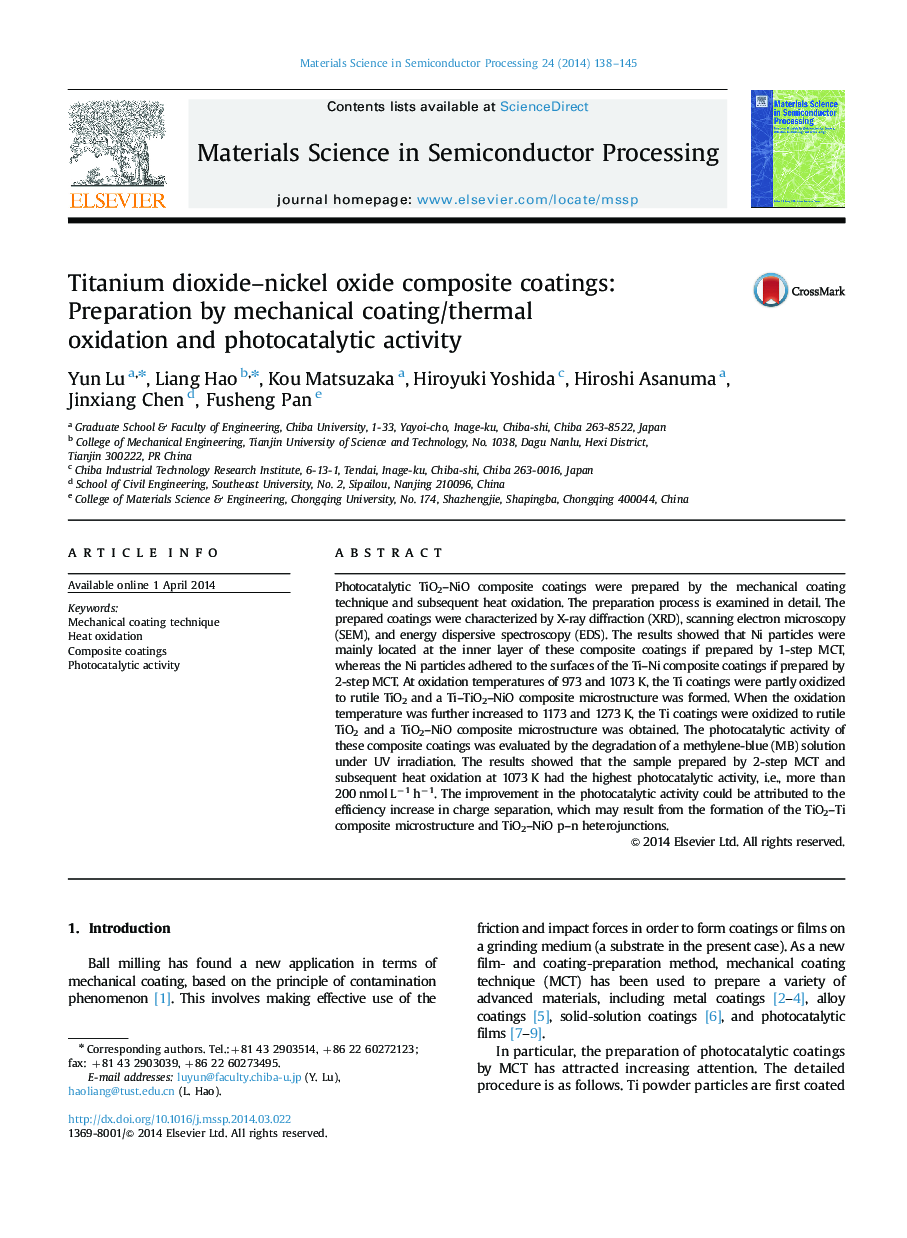| Article ID | Journal | Published Year | Pages | File Type |
|---|---|---|---|---|
| 729361 | Materials Science in Semiconductor Processing | 2014 | 8 Pages |
Photocatalytic TiO2–NiO composite coatings were prepared by the mechanical coating technique and subsequent heat oxidation. The preparation process is examined in detail. The prepared coatings were characterized by X-ray diffraction (XRD), scanning electron microscopy (SEM), and energy dispersive spectroscopy (EDS). The results showed that Ni particles were mainly located at the inner layer of these composite coatings if prepared by 1-step MCT, whereas the Ni particles adhered to the surfaces of the Ti–Ni composite coatings if prepared by 2-step MCT. At oxidation temperatures of 973 and 1073 K, the Ti coatings were partly oxidized to rutile TiO2 and a Ti–TiO2–NiO composite microstructure was formed. When the oxidation temperature was further increased to 1173 and 1273 K, the Ti coatings were oxidized to rutile TiO2 and a TiO2–NiO composite microstructure was obtained. The photocatalytic activity of these composite coatings was evaluated by the degradation of a methylene-blue (MB) solution under UV irradiation. The results showed that the sample prepared by 2-step MCT and subsequent heat oxidation at 1073 K had the highest photocatalytic activity, i.e., more than 200 nmol L−1 h−1. The improvement in the photocatalytic activity could be attributed to the efficiency increase in charge separation, which may result from the formation of the TiO2–Ti composite microstructure and TiO2–NiO p–n heterojunctions.
